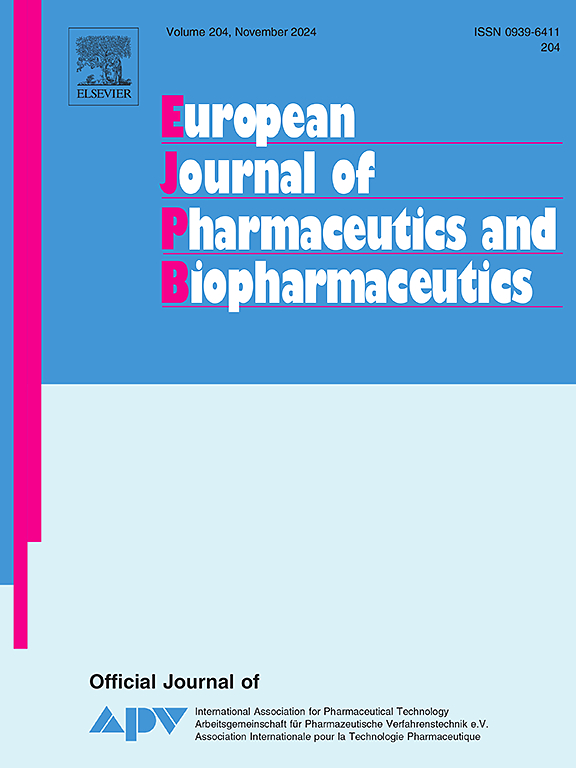动态胃肠模型(DGM)预测口服药物的药代动力学和食物效应
IF 4.4
2区 医学
Q1 PHARMACOLOGY & PHARMACY
European Journal of Pharmaceutics and Biopharmaceutics
Pub Date : 2025-04-17
DOI:10.1016/j.ejpb.2025.114723
引用次数: 0
摘要
口服药物化合物的药代动力学(PK)通常会因食物摄入而显著改变,按照监管机构的要求,评估这种影响通常涉及昂贵且耗时的临床试验。本研究采用动态胃肠模型(Dynamic胃肠道Model, DGM)——一种先进的模拟人类上消化道生化和力学方面的体外系统,来预测三种速释口服药物的血浆浓度-时间分布(PK分布)和食物效应。这些含有肉桂利嗪(CIN)、双氯芬酸钾(DIC)或扑热息痛(PAR)的药物产品在DGM中模拟禁食和喂养状态的临床方案进行处理,并通过卷积建模(通过卷积)来实现预测的PK谱。在禁食和进食状态下,预测的PK曲线与临床试验的观察结果一致,既捕捉到了CIN的积极食物效应,也捕捉到了DIC和PAR的消极食物效应。这些发现表明,DGM能够为口服药物的PK性能和食物效应提供见解。本文章由计算机程序翻译,如有差异,请以英文原文为准。

Predicting the pharmacokinetics and food effect of oral drug products using the dynamic gastrointestinal model (DGM)
The pharmacokinetics (PK) of oral drug compounds are often significantly altered by food intake and evaluating this effect, as required by regulatory agencies, typically involves costly and time-consuming clinical trials. This study used the Dynamic Gastrointestinal Model (DGM), an advanced in vitro system simulating both biochemical and mechanical aspects of the human upper gastrointestinal tract, to predict plasma concentration–time profiles (PK profiles) and food effect of three immediate release oral drug products. The drug products, containing cinnarizine (CIN), diclofenac potassium (DIC) or paracetamol (PAR), were processed in the DGM mimicking the fasted and fed state clinical protocols and the resulting intestinal drug dissolution profiles were modelled (by convolution) to achieve the predicted PK profiles. The predicted PK profiles in both the fasted and fed state were in accordance with the observations in clinical trials, capturing both the positive food effect for CIN and the negative food effects for DIC and PAR. These findings demonstrate the ability of the DGM to provide insights into the PK performance and food effect of oral drug products.
求助全文
通过发布文献求助,成功后即可免费获取论文全文。
去求助
来源期刊
CiteScore
8.80
自引率
4.10%
发文量
211
审稿时长
36 days
期刊介绍:
The European Journal of Pharmaceutics and Biopharmaceutics provides a medium for the publication of novel, innovative and hypothesis-driven research from the areas of Pharmaceutics and Biopharmaceutics.
Topics covered include for example:
Design and development of drug delivery systems for pharmaceuticals and biopharmaceuticals (small molecules, proteins, nucleic acids)
Aspects of manufacturing process design
Biomedical aspects of drug product design
Strategies and formulations for controlled drug transport across biological barriers
Physicochemical aspects of drug product development
Novel excipients for drug product design
Drug delivery and controlled release systems for systemic and local applications
Nanomaterials for therapeutic and diagnostic purposes
Advanced therapy medicinal products
Medical devices supporting a distinct pharmacological effect.

 求助内容:
求助内容: 应助结果提醒方式:
应助结果提醒方式:


